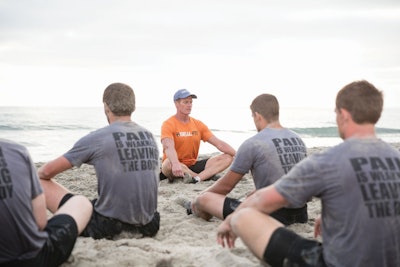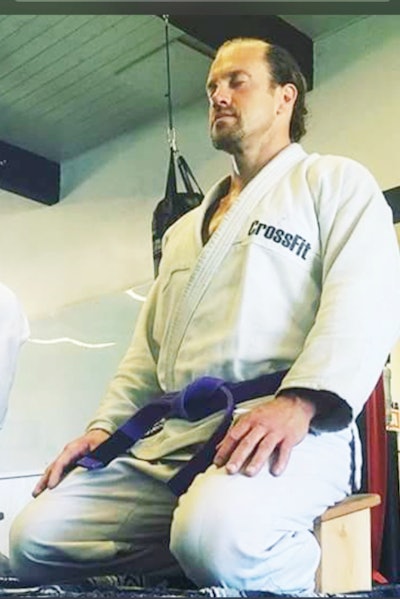
Meditation is a 5,000-year-old practice embraced by cultures around the globe and by some of the most successful people of our time. Oprah and Paul McCartney tout its benefits. Carolyn Gregoire explains in her Huffington Post article "The Daily Habit of These Outrageously Successful People" that "more and more leaders in the corporate world have been taking note of the benefits of meditation, which include lower stress levels, improved cognitive functioning, creative thinking and productivity, and even improved physical health."
The Japanese Samurai were said to have devoted much time to meditation. Even collegiate sports teams and elite military units have added meditation practice to their regimen with the intention of increasing peak performance and enhancing recovery. Plus, there are the meditation apps...
Yet, when I ask people in law enforcement if they meditate, I often get a response that is somewhere along the lines of "I tried it for five minutes and it sucked." Why has it sucked for the officers that I asked?
First, it is really hard for humans to go from 0 to 60, or, in the case of meditation, from 60 to 0. Second, in my experience, first responders tend to have very busy brains—this is what makes us great at our professions. Third, there is an overwhelming amount of information out there about how to meditate, the best way to meditate, the various forms of meditation, the number of minutes that should be devoted to meditation, and so on. You read up on it, you try it, your mind races instead of calming down and you feel like you are doing it "wrong." It is stressful. First responders have enough stress without our stress-reducing techniques being stressful.
If you have tried it and hated the experience, if you have tried it and did not feel that it "worked" for you, or if you want to try it but don't know how, understand first and foremost that it is well worth the effort to develop a meditation practice. Scientific studies conducted in the United States have shown that meditation:
- Enhances concentration
- Quickens cognition
- Improves emotional control
- Helps reduce tension
- Lowers heart rate
- Lowers blood pressure
- Improves multi-tasking
- Reduces anxiety
- Reduces stress
Furthermore, as Swami Rama explains in "The Real Meaning of Meditation," "Your normal response is to react to all your thoughts, and this keeps you ever busy in a sea of confusion. Meditation teaches you to attend to what is taking place within without reacting, and this makes all the difference" (www.yogainternational.com). This quote highlights the most important reason that first responders should put the effort into developing a meditation practice; meditation mirrors the essence of how we must approach our work. We must function well through the sea of confusion, and we must not react to our emotions and non-essential thoughts about many of the situations that arise in the course of our duties.
With that in mind, here is a way to meditate for the first responder—that doesn't suck.

Consider Your Lifestyle
How can first responders reap the enormous benefits that come from meditation? First of all, know that some of the "rules" you may read about for developing a meditation practice may need to be adapted to your life as a first responder.
In general, it is advised that people meditate for 20-30 minutes per day in a place that is free from all distractions after waking up in the morning but before eating breakfast (meditation is believed to slow digestion so it is best done on an empty stomach). But, you are not Oprah.
Your waking-up time might be when the kids are coming home from school and you most likely do not have a chef making your breakfast while you meditate for 30 minutes. Also, trust me, you will defeat the purpose of meditation if you assume that your significant other will serve as your personal chef so you can sit there and meditate for 30 minutes.
Walk Before You Run
Above all, do not begin your meditation practice by forcing yourself to sit still for 20 minutes or 10 minutes or even five minutes while trying to "quiet your mind." That will suck. Instead, approach meditation as a skill set that will develop over time with practice. It is a muscle that has never been exercised so you must start with light weight and just a few reps. To this end, I have developed a process for strengthening that meditation muscle. I refer to it as "The 30 Day Meditation Progression Calendar" (see page 54).
For the first week, your mission is to meditate for only 2 minutes per day. That's it. For the second week, meditate for 4 minutes per day. If you meditate a little longer or a little shorter or you miss a day, no worries. The goal is to gradually build the ability to make this life changing practice into a habit. If you follow the progression calendar, you'll be meditating 10 minutes a day after just 30 days. This is huge.
After this 30-day period, you can begin to increase your meditation time at your own pace. Although the long-term goal is to be able to meditate comfortably for 20-30 minutes a day, this may not be feasible for everyone. That is OK. Some meditation is much better than no meditation. A recent study revealed that people who practiced meditation for as little as 10 minutes increased their creativity while reducing restlessness, nervousness, and irritation.
Prime the Pump
Approach your meditation practice with the understanding that simplicity is the key to success. Before you meditate for the first time, pick a mantra—a word, sound or phrase. I personally use a mantra that has no meaning to me. It does not set off a cascade of thoughts. Many people use the word "one" or the primordial sound "om" as their mantra. The choice is yours. Just pick something with little to no meaning for you, don't share it with anyone, and never change it unless it absolutely doesn't work. During meditation, you'll silently say your mantra in your mind to help minimize the normal thoughts and activity of your mind.
Prepare Your Environment
Find a quiet place in your home that is as free from distractions as possible. Silence your phone. Shut down your computer. Pick a comfortable place to sit upright and place your feet on the floor. Place a clock or timer where it is easy for you to see. Take notice of the time. You can glance at this clock or timer as needed to help you establish a sense of timing as you develop your meditation practice.
Prepare Your Body
Gently close your eyes, place your hands on your lap, and feel your body settle into a comfortable, upright position. Bring your full attention to your natural breathing pattern and release all the tension in your face, neck, shoulders, and the rest of your body. This should take about one minute.
Meditate
Once you are relaxed, silently say your mantra in your mind. When you first start, you'll be doing this for only about two minutes. This time will increase according to "The 30 Day Meditation Progression Calendar" or in a time frame that works best for you. Refer to your clock or timer as needed. Just remember that perfection is not your goal. You can go a little long or a little short and you will still be doing well. No matter how much time you spend meditating, you will be repeating your mantra when needed, at your own pace and in your own rhythm.
Expect that this will not go perfectly. There will be times of silence (which is blissful), changes in cadence and tempo, and changes in the tonality of your mantra. In addition, your mind will wander and various thoughts will surface and reveal themselves. When this happens, simply and casually bring your attention back to your mantra.
That's it and it's really that simple. In time, your meditation practice will become stronger, and, hopefully, both your personal life and your work life will become a little easier. Meditation is a gateway to feeling and experiencing presence: the Here and Now.
That definitely won't suck.
Melissa Ryan assisted in the preparation and writing of this article.
George Ryan is a sergeant with a major Southern California agency. He spent 17 years in SWAT, and he created his department's Peak Performance and Recovery Training program.















